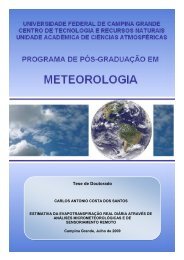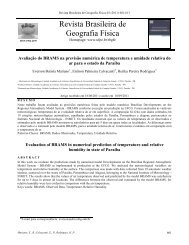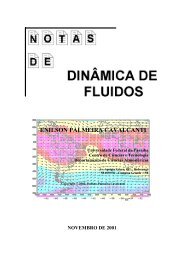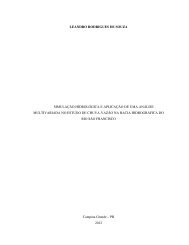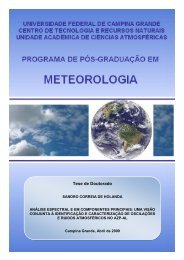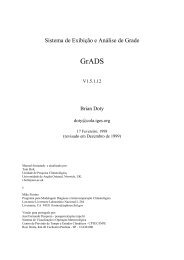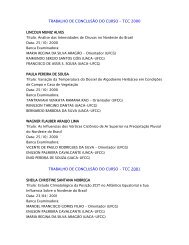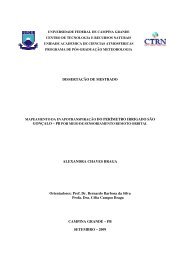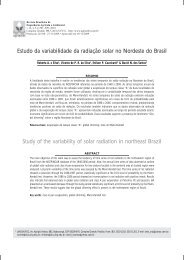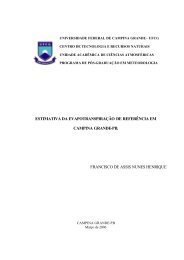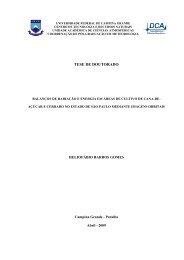You also want an ePaper? Increase the reach of your titles
YUMPU automatically turns print PDFs into web optimized ePapers that Google loves.
elevation data is provided by the DEM. This “artificial” lapse-adjusted surface temperatureis referred to as a DEM corrected surface temperature (T s-dem ).The DEM corrected surface temperature is calculated by the following equation:Ts_ dem= Ts+ 0. 0065∆z(12-7)where; ∆z is the elevation of each pixel minus the elevation of a datum (meters). The term∆z is positive if the elevation of a pixel is higher than the datum. The representativeelevation for the image, usually at the weather station, is used for the datum elevation.I. Outgoing Longwave RadiationThe outgoing longwave radiation (R L↑ ) is computed as in the Flat Model using theuncorrected surface temperature (T s ).J. “Cold” and “Hot” Pixel SelectionThe corrected surface temperature (T s-dem ) is used for the selection of the two “anchor”pixels. The T s image shows high and low pixels rather than wet or dry pixels because of theelevation effects. For higher than datum pixels, the lapse correction is added and T s-dem ishigher than T s . Using the T s-dem data allows us to find truly wet and dry pixels. The methodsdescribed in Appendix 7 are followed except that the T s-dem image is used rather than the T simage.K. Incoming Longwave RadiationThe incoming longwave radiation (R L↓ ) is computed since the transmissivity of air is nolonger a constant for all pixels. The reference temperature (T cold ) is adjusted for the lapseeffect in a similar way as in equation (12.7):T cold(each pixel) = T cold + 0.0065∆z (12-8)where; ∆z is the elevation of the “cold” pixel minus the elevation of each pixel. Theelevation of the “cold” pixel is taken from the DEM subset image by entering itscoordinates.L. Net Surface RadiationThe net surface radiation (R n ) is computed in model_14 similar to the Flat Model exceptthat incoming longwave radiation (R L↓ ) and incoming shortwave radiation (R S↓ ) are nowfiles rather than constants.M. Soil Heat FluxThe soil heat flux (G) and G/R n are computed as in the Flat Model using the uncorrectedsurface temperature (T s ).96



